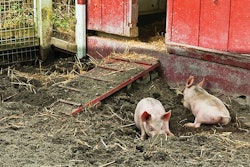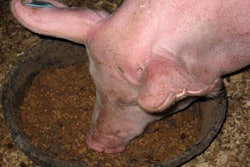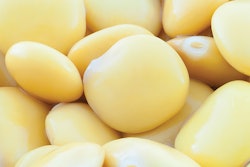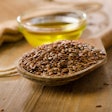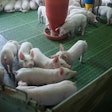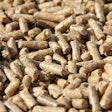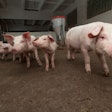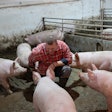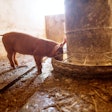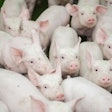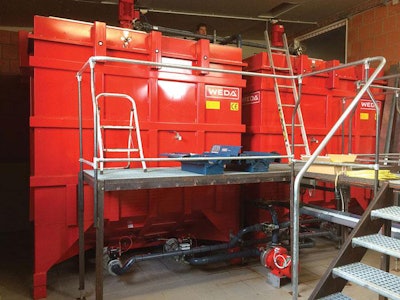
Modern pig production has some major challenges. Pressure on cost price is and will remain a decisive factor to survive as a farmer. More recently, human concerns on antibiotic resistance resulted in pressure to significantly reduce antibiotic use in pig production. Another human health issue is the need to reduce Salmonella incidence in pig production. Environmental pollution aspects, like nitrogen and phosphorous excretion, and the amount of manure, force the pig sector to improve efficiency of diets and production. The European political wish to forbid use of GMO-soya and/or restrict import of soya means alternative European protein raw materials have to be used. Fermentation of raw materials for pig nutrition offers advantages in all of these major challenges.
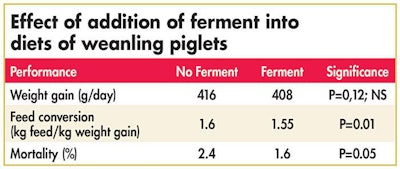
Feeding a diet with fermented raw materials resulted in better feed conversion and a lower mortality rate.
Fermentation mixtures include a high proportion of one or two raw materials high in carbohydrates (i.e., barley, wheat, rye) and one or two raw materials high in protein and/or fiber (i.e., rapeseed meal, sunflower meal, wheat bran). This fermented mixture has an inclusion rate between 30 and 60 percent in the final diets of sows, piglets and grower-finishers. Farms using the fermentation concept reported savings on feed costs, less use of antibiotics, reduction of Salmonella incidence, less manure production and less use of imported soya. These benefits result in a sharp increase in interest in fermentation, world-wide. In addition, the benefits of fermentation are so evident that even dry-feed farms are considering changing to liquid feeding in combination with fermentation.
Trial and error period
Lactic acid fermentation is a well-known technology in the human food industry for hundreds of years. Since 1999, the fermentation of pig diets has interest from scientific research groups in Europe. In the period of 2007-2009, the first pig farms were equipped with fermentation technology. In retrospect, these years can be described as "trial and error"; many errors and mistakes were made, and farms stopped using fermentation. Therefore, a group of Dutch companies launched a multi-year research program, which in 2013 resulted in a consistent and proven fermentation concept available for practice.
Read more: Fermented liquid pig feed benefits outweigh drawbacks
The hygienic/microbial status of a pig farm is completely different from the fermentation industry (e.g., cheese and yogurt factories). We now know that unpredictable results and a high proportion of unsuccessful fermentations were contributed to by certain techniques, including open fermenters, back-slopping fermentation (continuously leaving 20 to 50 percent of the ferment in the fermenter and adding fresh ferment on top of it), allowing fermentation temperatures between 20-30C, adding liquid co-products from human food industry to the fermenters, and having too low initial-pH at the start of fermentation. In addition, the fermentation technology is now completely automatic.
New fermentation concept on pig farms
Based on a three-year R&D project, which was a cooperation between ForFarmers, WEDA Holland, Van Asten Group (a family owning pig farms in Holland and Germany) and LEROSCH, new basic conditions were drawn up in the fermentation concept. Hot water, hygiene protocols, batch-fermentation and an activated liquid starter culture are the main four pillars.
Hot water is used to start with a pasteurization of the raw materials to be fermented. After this, the temperature is brought to 37-38C by adding cold water, followed by the addition of the activated liquid starter culture. Hot water is also necessary for an effective cleaning and disinfection of the fermenters. From this point of view, stainless steel fermenters are strongly preferred.
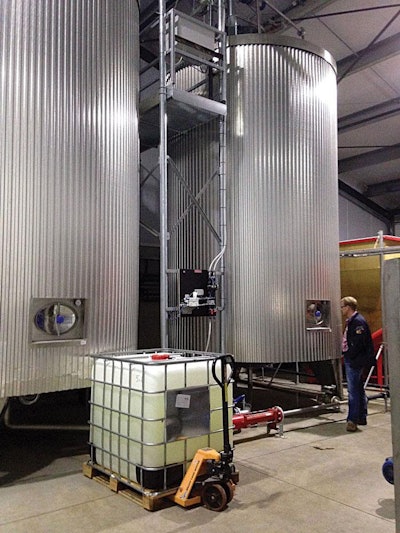
Shown here are two stainless steel fermenters, 2 x 25 tons, with activated liquid bacteria on a pig farm with 5,000 piglets and 3,000 grower-finishers. | Ronald Scholten
Batch-fermentation is another major hygiene factor. This means two fermenters are used, which are alternately fermented and fed to the pigs. The complete emptying and cleaning of the fermenter every day before a new batch is fermented are crucial to obtain a successful fermented soup with constant taste, pH and acid composition.
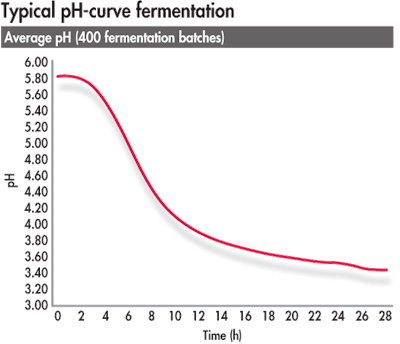
The goal is a drop in pH below 4.0 within 10 to 12 hours.
The use of a liquid starter culture is fundamental because it allows a quicker pH drop and optimal production of lactic acid and acetic acid compared to the use of commonly used dry starter cultures.
Pros and cons of fermentation
Farms using the fermentation concept reported an average economic advantage of EUR30 per sow, EUR1.50 per sold piglet, and EUR3 per sold fattener. These advantages include the feed costs and the performance data (including health) of the pigs. Not included are the savings on use of organic acids because of better stability/microbial hygiene of the final liquid diets. Also, savings in less manure quantity and less nitrogen and phosphorus per m3 manure are not counted in.
Fermentation of raw materials offers huge possibilities to improve financial results.
The better economics makes it interesting for a big proportion of the liquid feed farms to invest into fermentation technology. Return-on-investment calculations often results in a 5-year or shorter payback, which is considered as short in pig industry.
The future of fermentation
The current concept of fermentation is based on the addition of an activated liquid lactic acid bacteria as starter culture. Ongoing research is focused on the use of enzymes during the fermentation process. The goal of enzyme inclusion in the fermenter is to make it possible to use high-fiber raw materials in higher inclusion rates or to use raw materials, which are not used in pig nutrition yet. Transfer cow feed into sow feed is an interesting slogan.
Fermentation of raw materials offers huge possibilities to improve financial results, reduce antibiotic use, reduce environmental pollution, reduce Salmonella incidence and to use European protein raw materials instead of imported soya. Further research will allow the usage of new and cheaper raw materials with the help of enzymes.
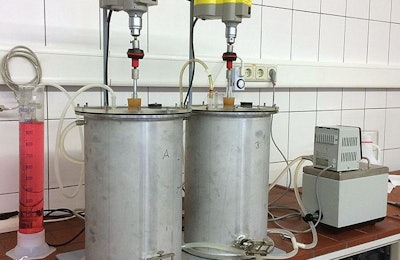
Further research will allow the usage of new and cheaper raw materials with the help of enzymes.


